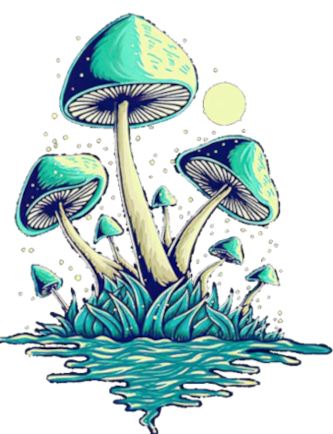Psilocybin Magic Mushroom
Best Mushroom Strain For Sale Online Sydney
Magic Mushrooms: Psilocybe Cubensis
Psilocybe cubensis strains are probably the image that comes to mind when we think of therapeutic psychedelic mushrooms. These sacred fungi belong to the family of Hymenogastraceae and have appropriately gained the nickname “golden halos” for their almost-unmistakeable convexes or flat, yellow-brown caps and smooth, sticky surface. Best Mushroom Strain For Sale Online Sydney
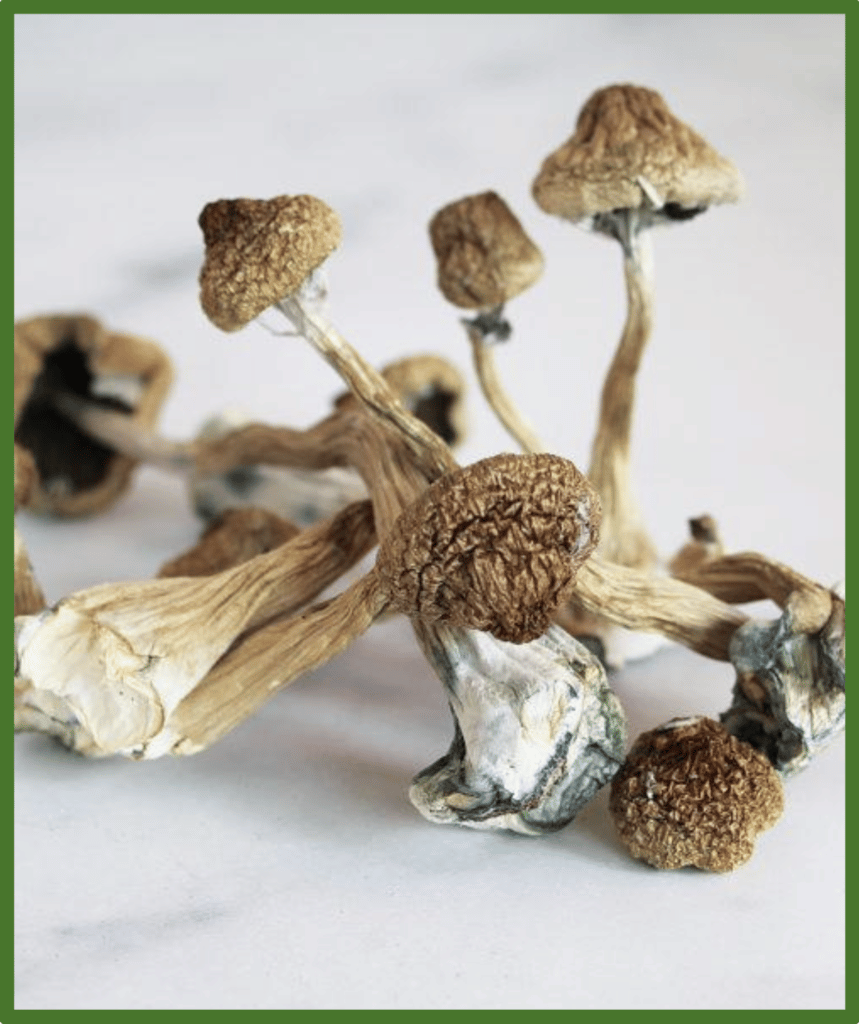
Local to the tropics of Gulf Coast states, “cubes” are amongst the most widely distributed species because of their easy-to-cultivate properties, naturally germinating in cattle dung and grown indoors with substrates like coffee or brown rice flour.
These medicinal fungi often bruise blue due to oxidation, with narrow gray gills edged by an off-white color, typically containing 10-12 mg of psilocybin per gram of dried mushrooms. Mostly odorless and with a ringed stipe, P. cubensis has been the lucky subject of much selective breeding, yielding over 60 divergent strains like Wavy Caps and Penis Envy. Best Mushroom Strain For Sale Online Sydney
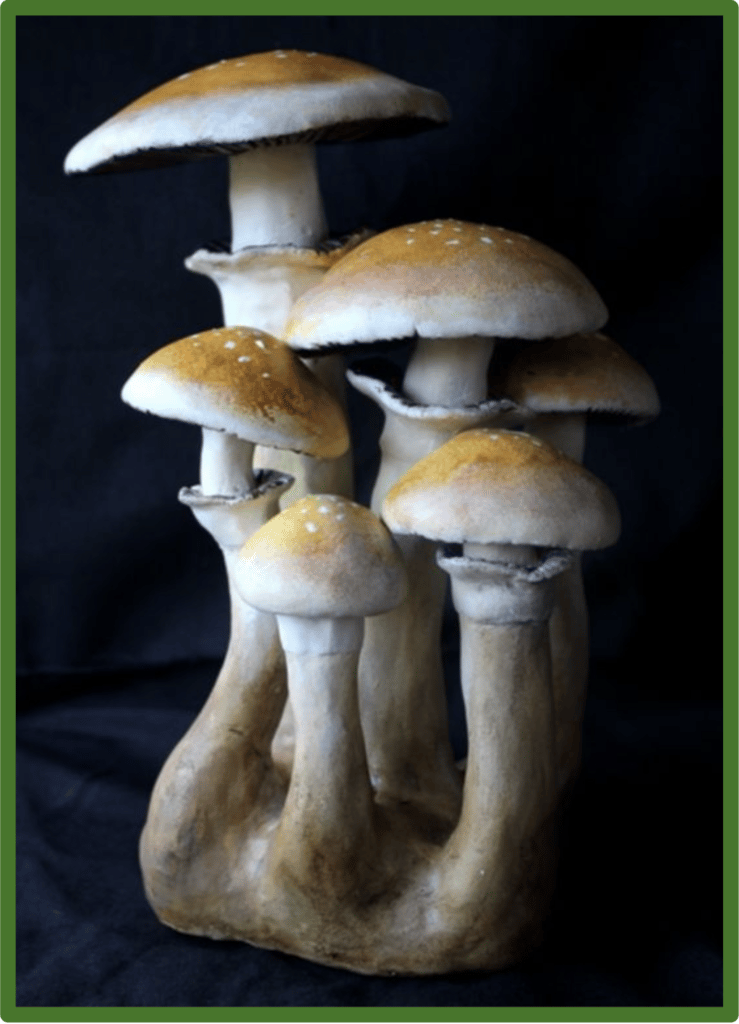
The result? Carefully curated hybrid species of mushrooms whose desired characteristics have been isolated to produce heightened hallucinogenic effects (up to 12x more potent) and better adaptation to unpredictable environmental conditions. Best Mushroom Strain For Sale Online Sydney
Psilocybe cubensis can be differentiated from its derivative counterparts by their commensurately large stem size and widened caps. Now let’s explore the extensive genetic analogs of these psychedelic mushrooms.
Magic Mushrooms: ‘Golden Teacher’
‘Golden Teacher’ is amongst the most favored strains of therapeutic psychedelic mushrooms. Their beautifully plump, smooth-to-the-touch caps produce a tinge of burnt-orange that fades into a slightly paler, somewhat-girthy stem. Journeying with Golden Teachers will take you along for a very introspective ride. Best Mushroom Strain For Sale Online Sydney
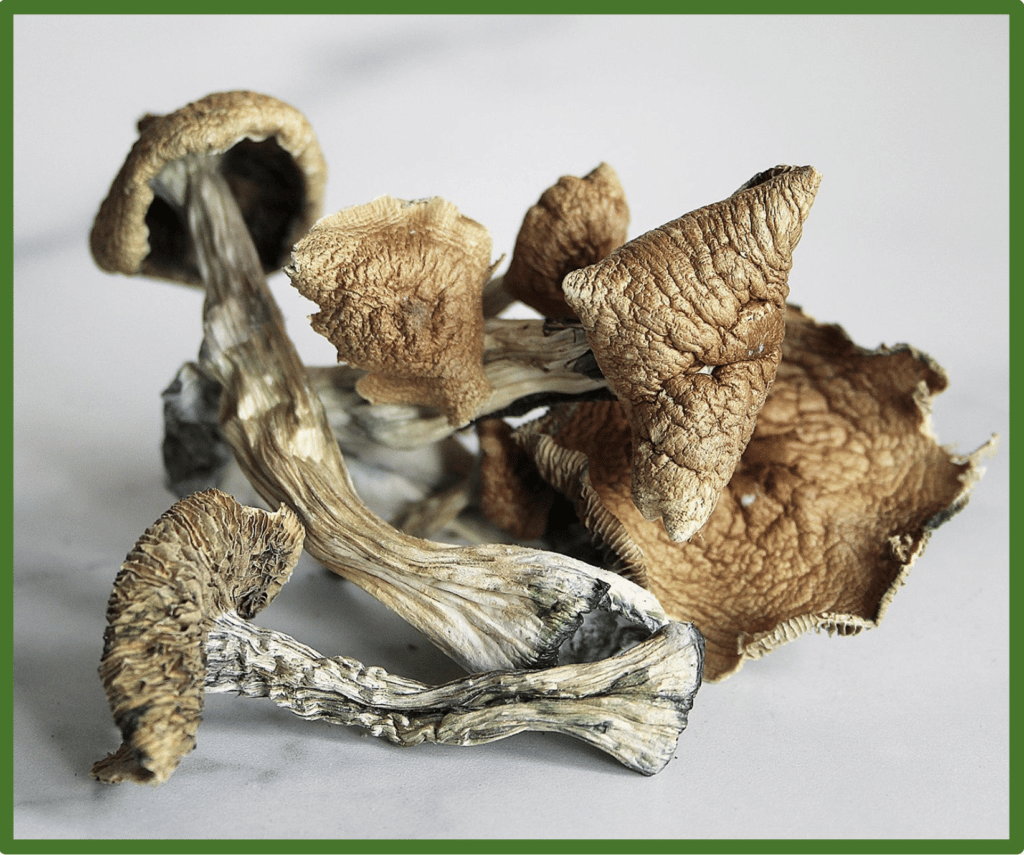
This cultivar is considered to be medium-strength in terms of potency, scaling in with 0.63% psilocybin, 0.60% psilocin, and 0.25% baeocystin, and with a shorter than average trip duration of 2-4 hours, making it a perfect strain for the not-so-experienced journeyer. However, the healing powers of these tough, little mushrooms should not be overlooked.
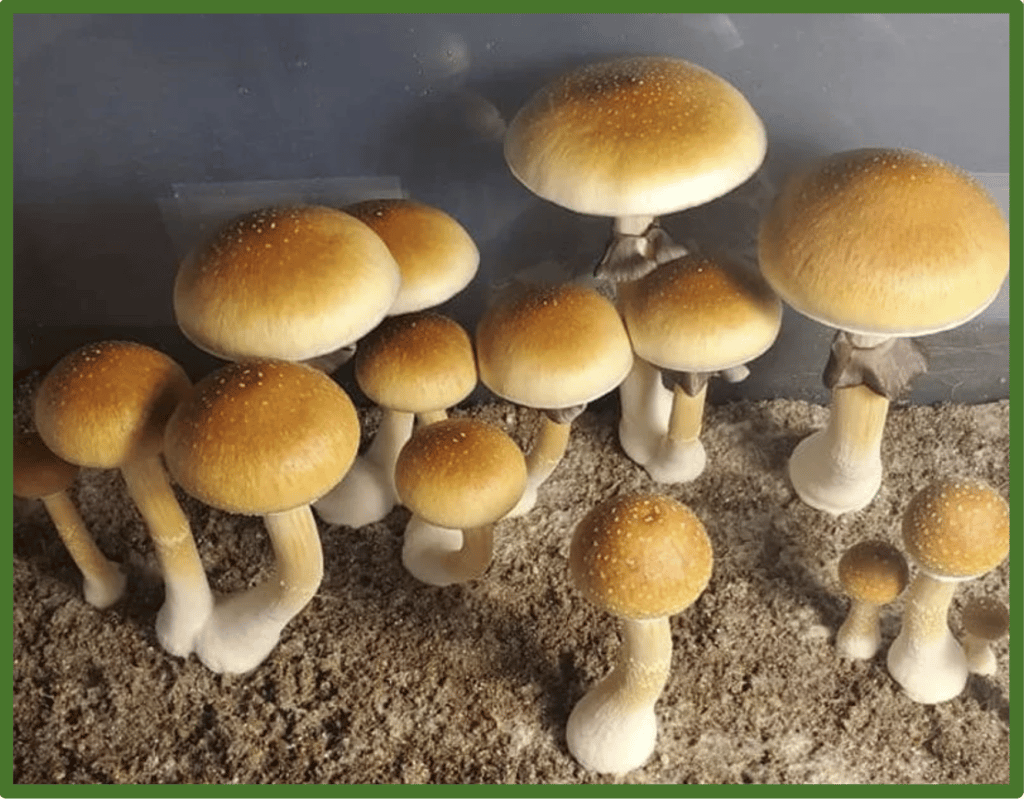
In fact, Golden Teachers make their claim to fame by depositing a palpable sense of ancient intelligence through consoling feelings of heart-centered warmth and love. A sense of educational clarity is often reported with their experiences, offering the perfect balance of consciousness expansion and euphoric enjoyment.
Magic Mushrooms: ‘Albino Goodies’
‘Albino Goodies’ or albino mushrooms are a cross between the strains Golden Teacher and Albino A+ (AA+). They’re often deemed one of the most potent strains of cubensis and this popular speculation comes from the assumption that AA+ is biochemically similar to Panaeolus, which would explain why their potency is so highly sought-after (0.75% – 2%).
This dynamic combination carefully extracts the unreserved wisdom, deeply reverenced in Golden Teacher strains, to produce revelatory experiences that employ the reportedly quicker-acting, physically-racing intensities of AA+.
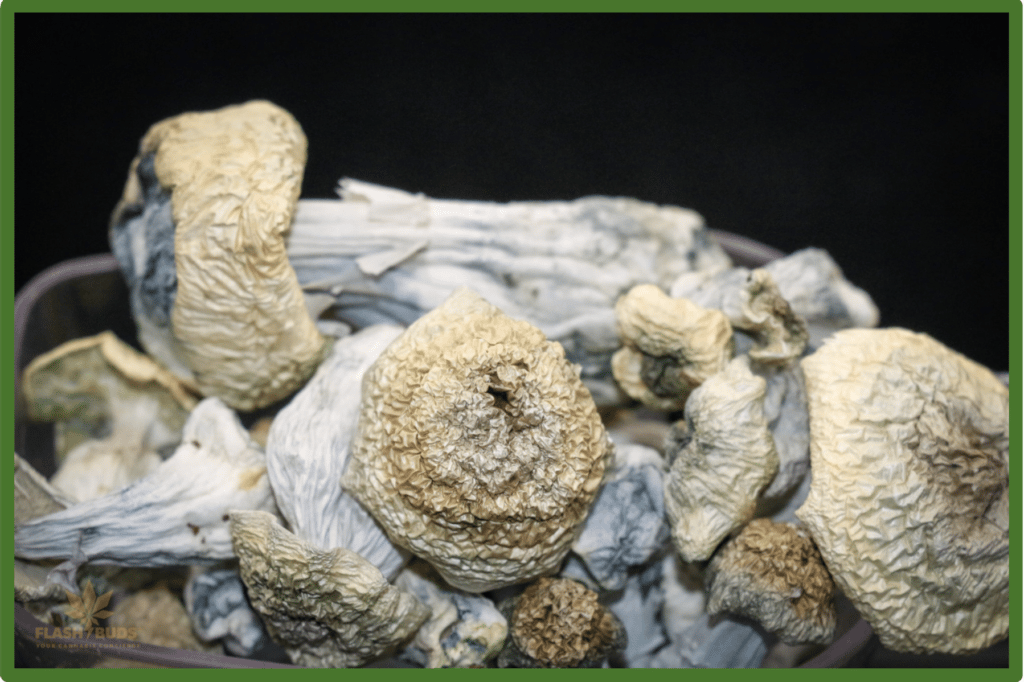
Though the name suggests AA+ is albino, their cream-colored fruiting body falls more in par with a leucistic denomination, showing visible signs of reduced pigmentation. When crossed with Golden Teachers, these ghostly mushrooms showcase a slightly more sun-kissed cap, favoring a minimal amount of light and propagating a focus on physical sensations, or what some would call a “body high”.
Magic Mushrooms: ‘Flying Saucers’
Psilocybe azurescens, aptly tagged ‘Flying Saucers’, are a relict therapeutic strain of P. cubensis that are thought to have been discovered in 1979 by a group of Boy Scouts wandering the forested grounds of Oregon state. Later, American mycologist, Paul Stamets, was the first to name and identify this strain in 1996.
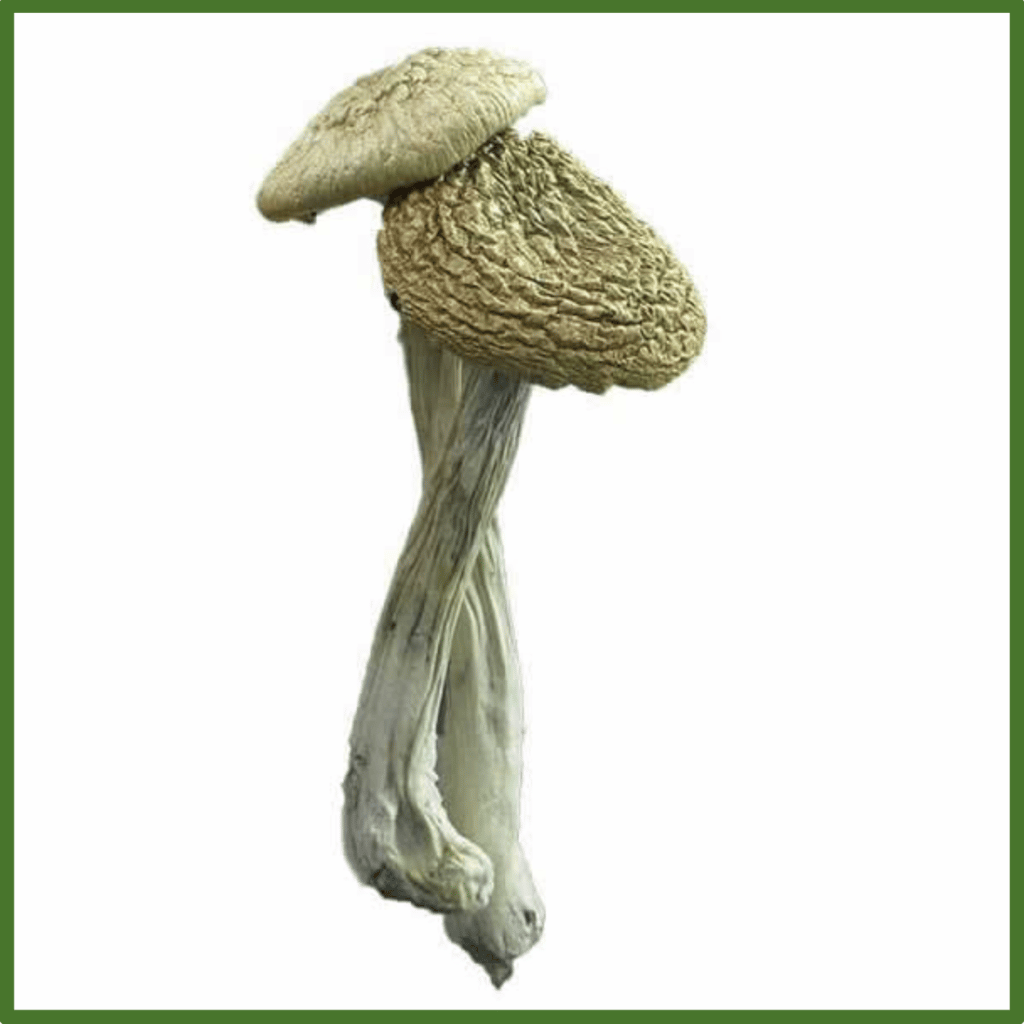
Though the slick-looking, rusty-orange flesh of this strain is known to produce 25 mg of psilocybin for every dried gram (4x more potent than than p.cubensis), the Oregon Psilocybin Advisory Board suggests these mushrooms be avoided if their source is unknown, due to several reports of induced wood lover’s paralysis.
This condition can cause prolonged muscle weakness and is associated with other mushrooms that grow in decaying wood, like P. stuntzii, P. alennii, and P. Cyans.
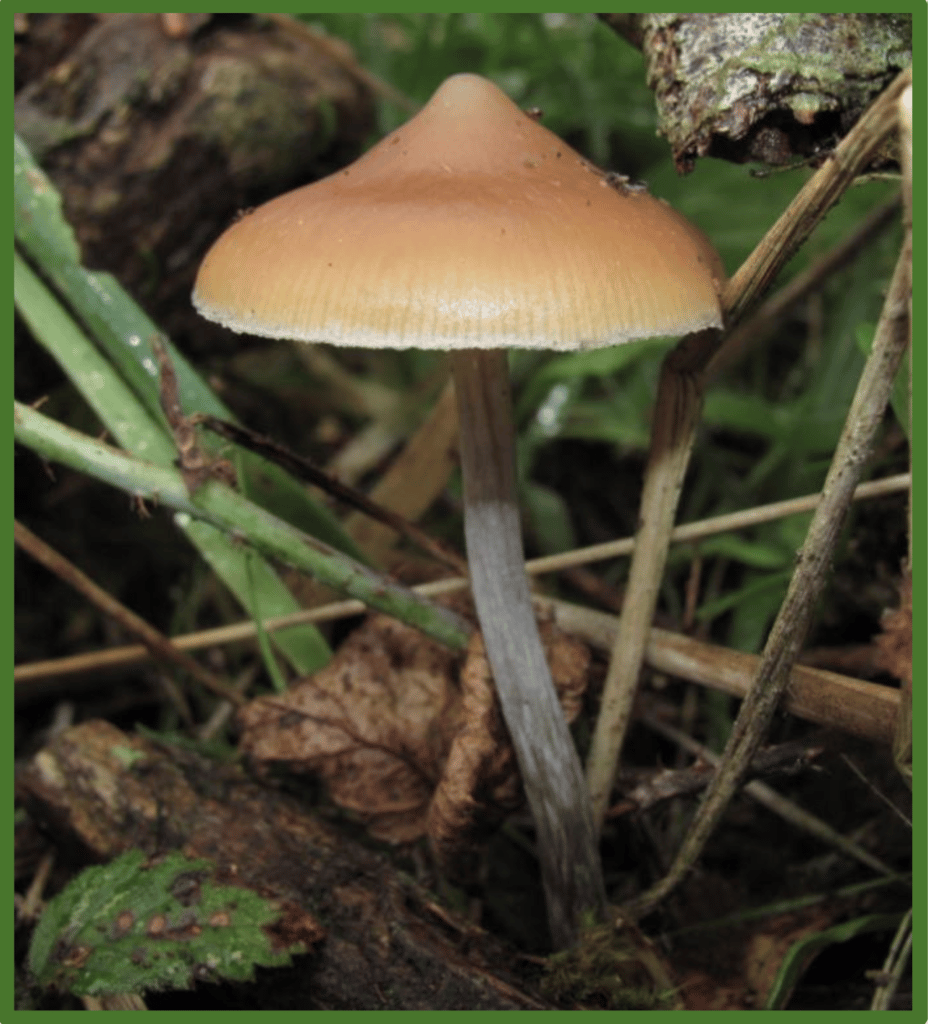
However, plenty of anecdotes report a pleasantly potent therapeutic psychedelic experience on this strain, with no negative side effects. The best way to ensure a safe experience with the most potent strain of psilocybin mushrooms, is ensuring that your supply was sourced from an indoor cultivator, using wood chips or sandy soil substrates.
Magic Mushrooms: ‘Knobby Tops’
Ranking in as the second most potent strain of therapeutic psilocybin mushrooms are Knobby Tops, or Psilocybe Baeocystis. With 15 mg of potency for every gram of dried mushrooms, these mulch-loving fungi express a strong attachment to the bark of Douglas firs. First discovered in Oregon, these gelatinous mushrooms showcase a purple-brown spore print with a relatively thin, white-colored stem.
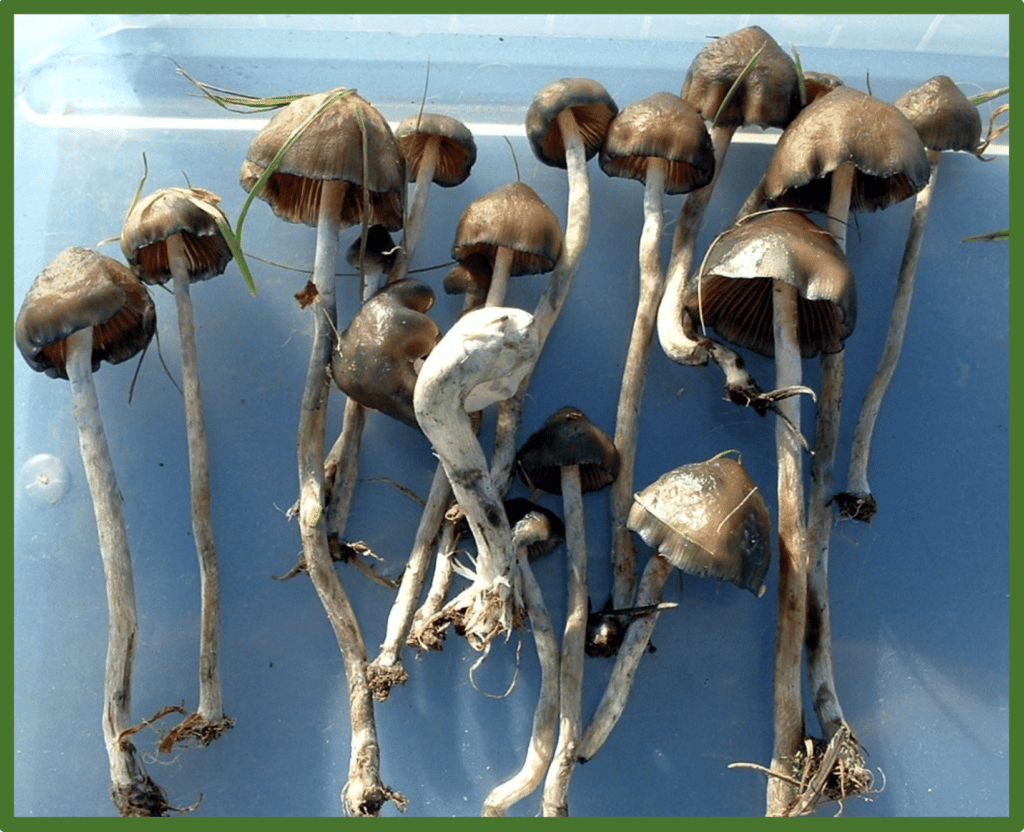
Mushroom fanatics use several names to reference this strain, including ‘bottle caps’, ‘blue bells’, or ‘olive caps’. Reports suggest that the psychoactive properties of Knobby Tops produce a higher-than-average intensity of colors, making this an ideal strain for the bravest, most thrill-seeking psychonauts.
Magic Mushrooms: The Bohemian Psilocybe
Bohemian Psilocybe or Psilocybe Bohemica yields a whopping 15 mg potency per 1 gram of dried mushrooms, making these the third most potent strain of magic mushrooms. This fierce strain of psilocybin is native to central Europe and can be found making its annual debut during the autumn season. They have a particular affinity for wood debris, more specifically, Betula, Carpinus, Piceae, and Alnus trees, and produce a farinaceous odor.
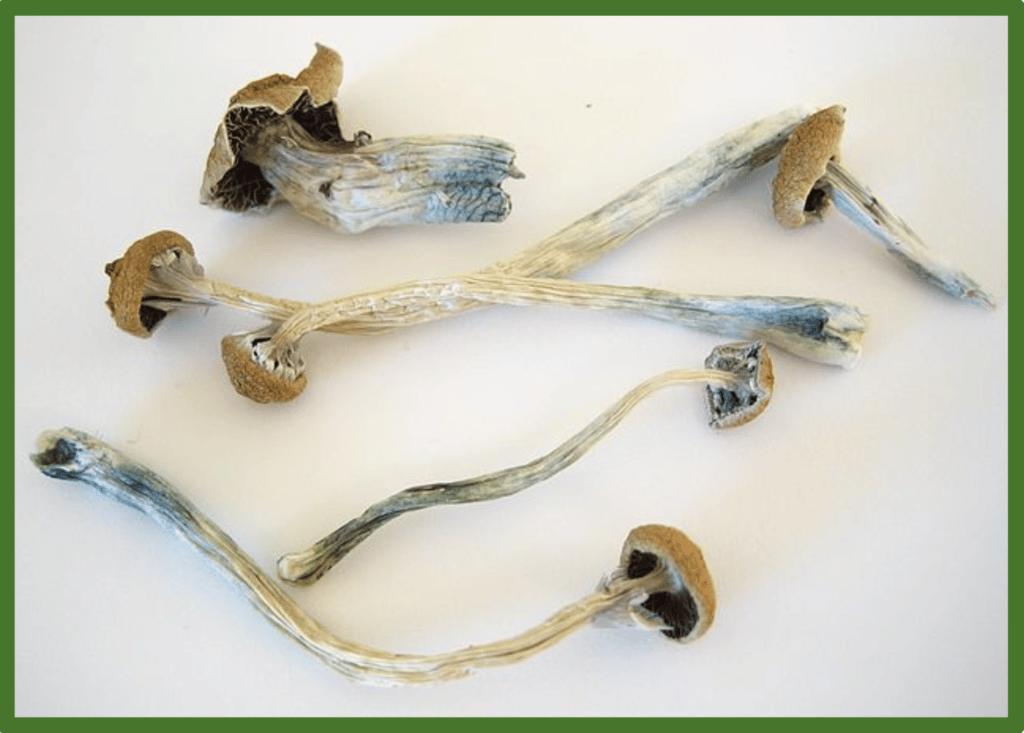
Their identification dates back to 1969 when Meinhard Moser and Egon Horak brought them to public attention. Their caps mature into a sandy orange-brown color and grow paler when dried. Just like any derivative of P. cubensis, these fungi bruise blue when exposed to oxygen or physical disruption.
Magic Mushrooms: ‘Penis Envy’
With a name like “Penis Envy” we’d expect much introspective complexity to emerge from these mushrooms, and thankfully, this strain does not disappoint. Its bulbous, underdeveloped cap and chunky stem are home to a remarkably high concentration of psilocybin and psilocin.

These medicinal mushrooms bruise blue and carry a dark-toned appearance, but their stringent need for longer periods of maturation impose strenuous levels of cultivation care, leaving much envy to be felt toward these notoriously hard-to-find mushrooms.
However, if you can get your hands on this coveted strain, your therapeutic psychedelic experience will undoubtedly mirror the mushroom’s 50% increase in psychoactive concentrations.
Typical sensations of synesthesia, euphoria, and distorted time, will be present in your journey, but some reports even compare the heightened effects of this strain to the experiences of LSD and DMT, though this is definitely up for debate. So we advise treading lightly in terms of dosage, starting small then working your way up is always the smartest choice.
Magic Mushrooms: B+ Cubensis
B+ Cubensis is a more widely accessible strain of P. cubensis, some believe its genetic origins likely stem from a hybridization with P. azurescens that occurred at least 20 years ago by experienced Floridian cultivator, Mr. G. B+ features a large and lengthy, yellow-white fruiting body and its hallucinogenic effects are known to usher perceptual feelings of warmth and ease.
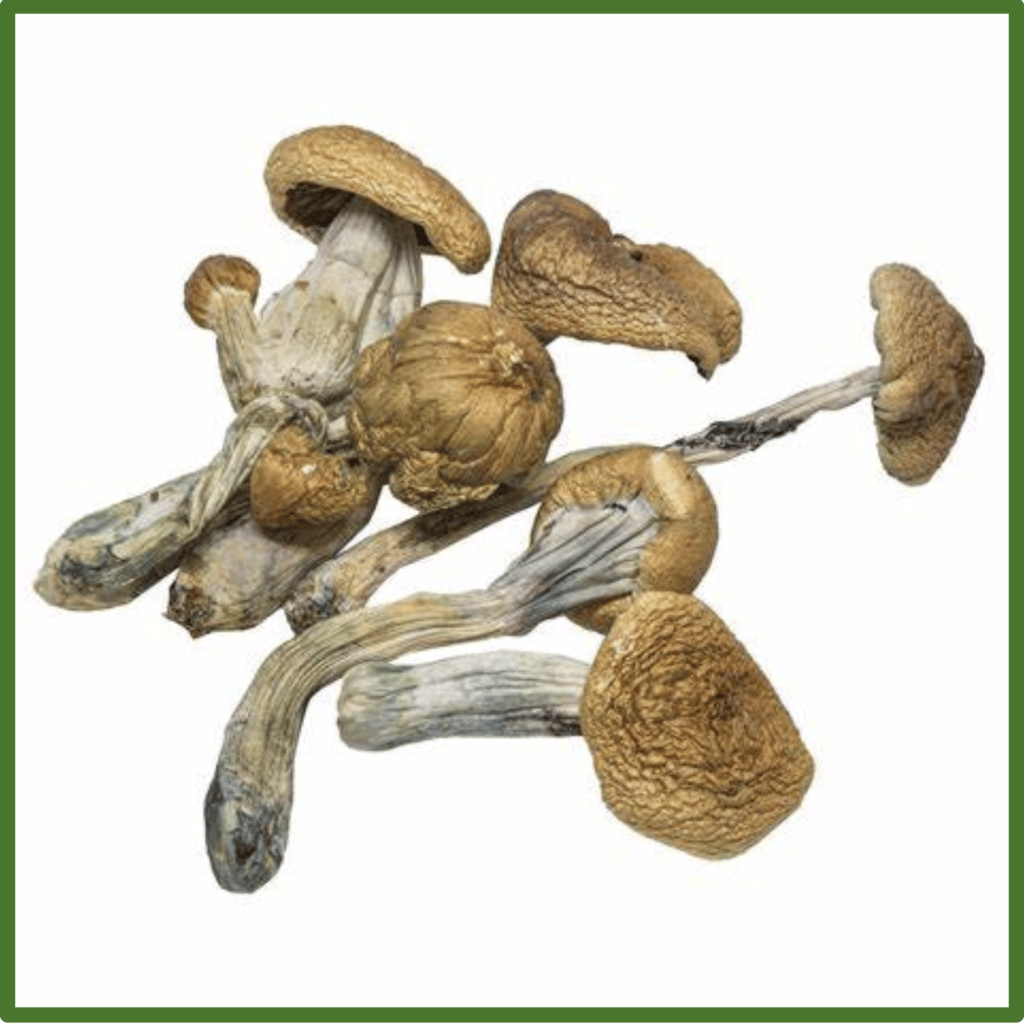
B+ has gained a reputation for being the ideal beginner strain, since its effects are more moderate and toned-down, as the name implies. Another compliment to the B+ strain is their supernatural ability to reduce side effects of nausea, associated with most other strains of mushrooms. It’s likely that your own supply of mushrooms will be sourced from a larger batch of this strain, as their low-maintenance growth makes them easy and quick to cultivate in bulk.
Magic Mushrooms: Burma, Cambodian, Costa Rican & Ecuadorian Cubensis
These Psilocybe cubensis strains are local to the regions they’re named after. Similar strains include Australia, Chilean, Cuban, and Palenque mushrooms. What bridges these strains together are their akin genetic contents. Though their organic garments vary slightly in shape, size, and potency, this group of mushrooms is relatively reliable at producing a productive psychedelic experience.
Some, like the Cambodian Cubensis, yields dense flushes with a high level of adaptability to unoptimized growing environments, making them more prevalent amongst mushroom buyers. While others, like the Australian or ‘Aussie’ Cubensis, are fancied for their unique resistance to mold and bacteria.
Magic Mushrooms ‘Liberty Cap’
‘Liberty Cap’ or ‘Blue legs’ are a common name for the therapeutic psilocybin strain semilanceata. This slimy, cone-capped fungus presents itself as the fourth most potent source of psilocybin and baeocystin—an alkaloid analog of psilocybin (14 mg potency/ 1 dried gram).
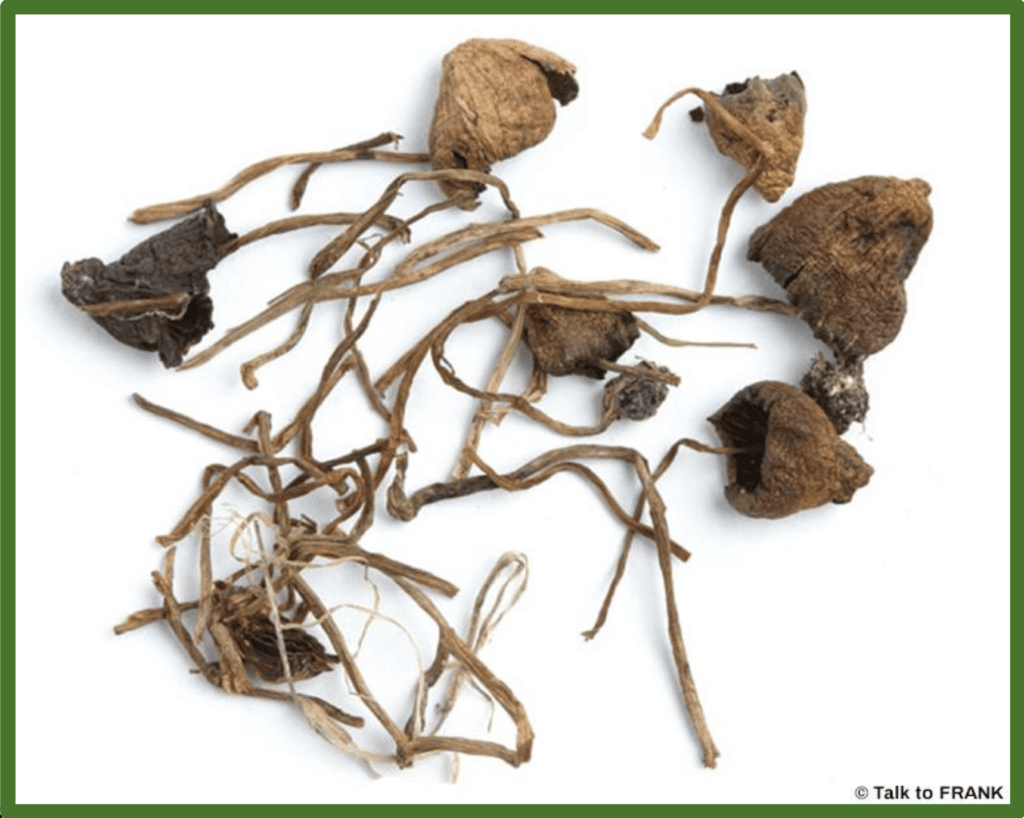
Being at high demand in the therapeutic psychedelic mushroom market, the Liberty Cap features a signature array of thin strips that run vertically across its cap, with cream-colored gills that turn a purplish-black after maturation and having a particular fondness for moist, grassland habitats.
Prominent throughout the UK and parts of North America, these glossy capsules of human transcendence are credited for their rich and long standing history.
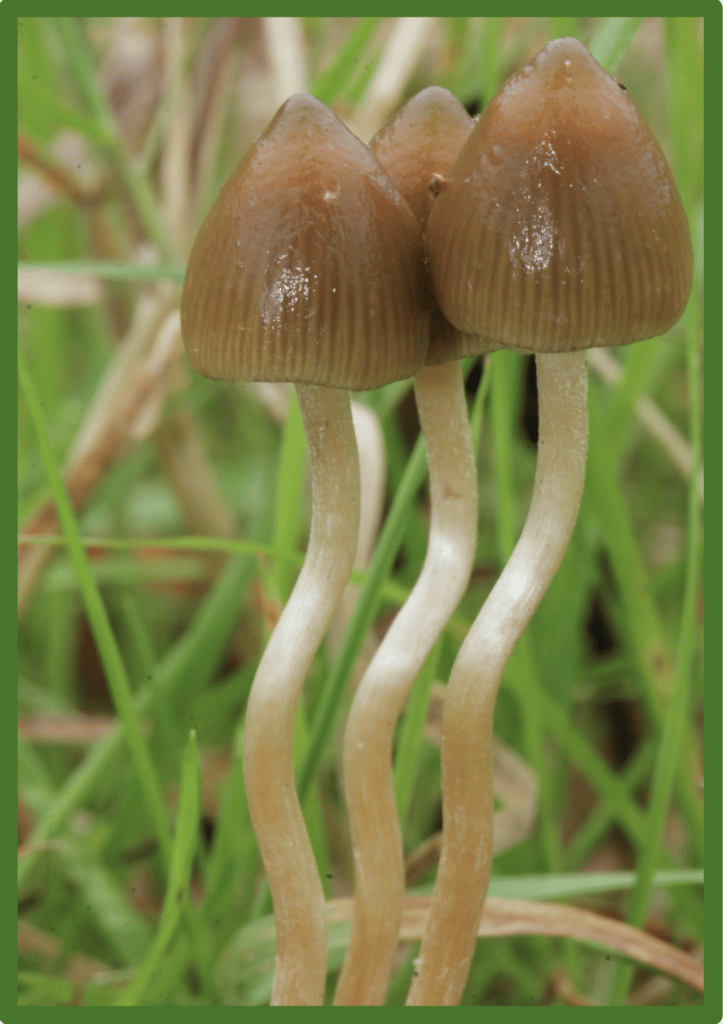
In fact, Albert Hofmann, the Swiss chemist who famously synthesized LSD, was also the first to identify this medicinal mushroom’s psychoactive properties in the early 60s.
Even before that, our psychedelic healing timeline traces the use of Psilocybe semilanceata all the way back to 1799, when its hallucinogenic properties hosted the first known psychedelic mushroom trip, following our primitive ancestors, of course. These small, but resilient organisms accumulate 1.7% psilocybin in their gelatinous caps and contain 0.36% of baeocystin.
These high levels of psychoactivity surpass those of P. cubensis by a landslide, with the psilocybin content in P. cubensis coming in at a much lower 0.37-1.30% and only 0.14-0.42% psilocin content. So if you’re looking to embark on a potent psychedelic experience, Liberty Caps are surely the way to go.
Magic Mushrooms: Wavy Caps
Though we briefly mentioned these mighty therapeutic mushrooms under the category of fungi that thrive on the surface of decaying wood, Psilocybe cyanescens or ‘Wavy Caps’ nonetheless, deserve a spotlight of their own. As its name suggests, these mushrooms boast a large and flared, umbrella-like cap with rippled ridges, typically measuring 1.5-5 cm across.
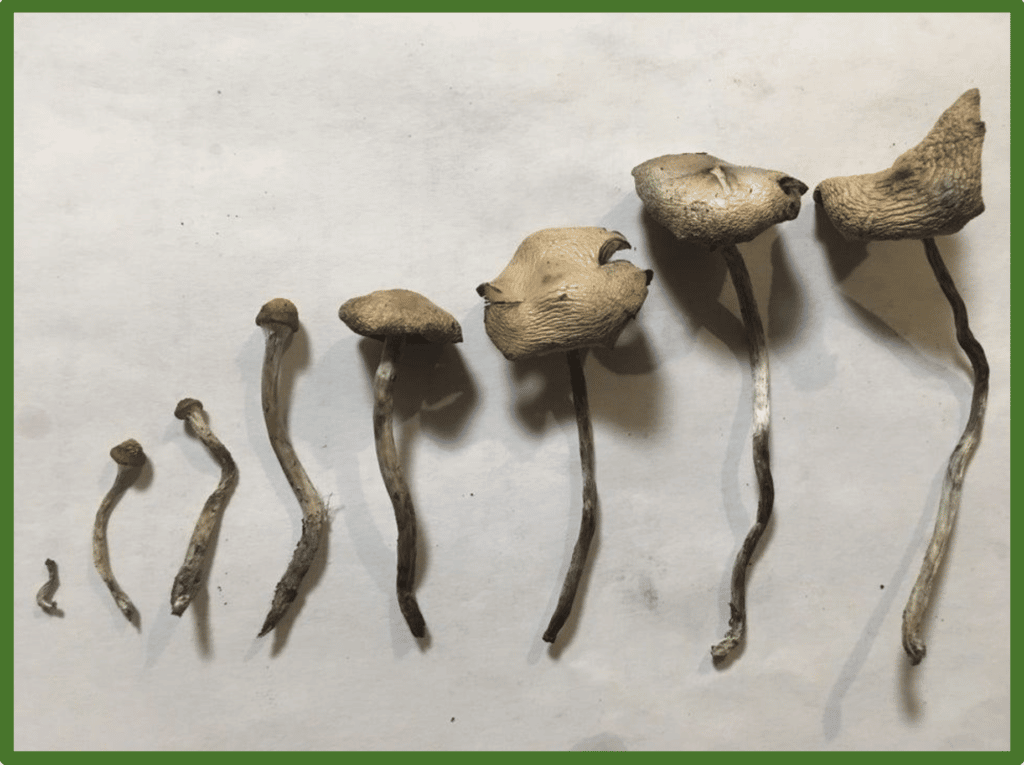
Another primary definer is their copper-brown color that tends to fade into a paler yellow when they’re put to dry. Their gills produce a similar blue-ish tint when disturbed and contain up to 1.96% psilocybin, certainly putting these medicinal mushrooms at the top of our lists in terms of potency.

If you’re still concerned with the potential of experiencing wood-lover’s paralysis, you’d be happy to hear that Wavy Caps are often distributed by indoor cultivators who use wood chips as substrate, eliminating the potential for experiencing any somatic motor complications.
That’s to say, if you have a reliable source of mushrooms who can confirm its cultivation origins, picking up a batch of Psilocybe cyanescens could be a viable option.
Magic Mushrooms: ‘Blue Meanies’
Panaeolus Copelandia Cyanescens or ‘Blue Meanies’, cannot be disregarded. The dramatic potency of this medicinal mushroom strain produces powerful visual and auditory stimulations that melody throughout your entire journey.
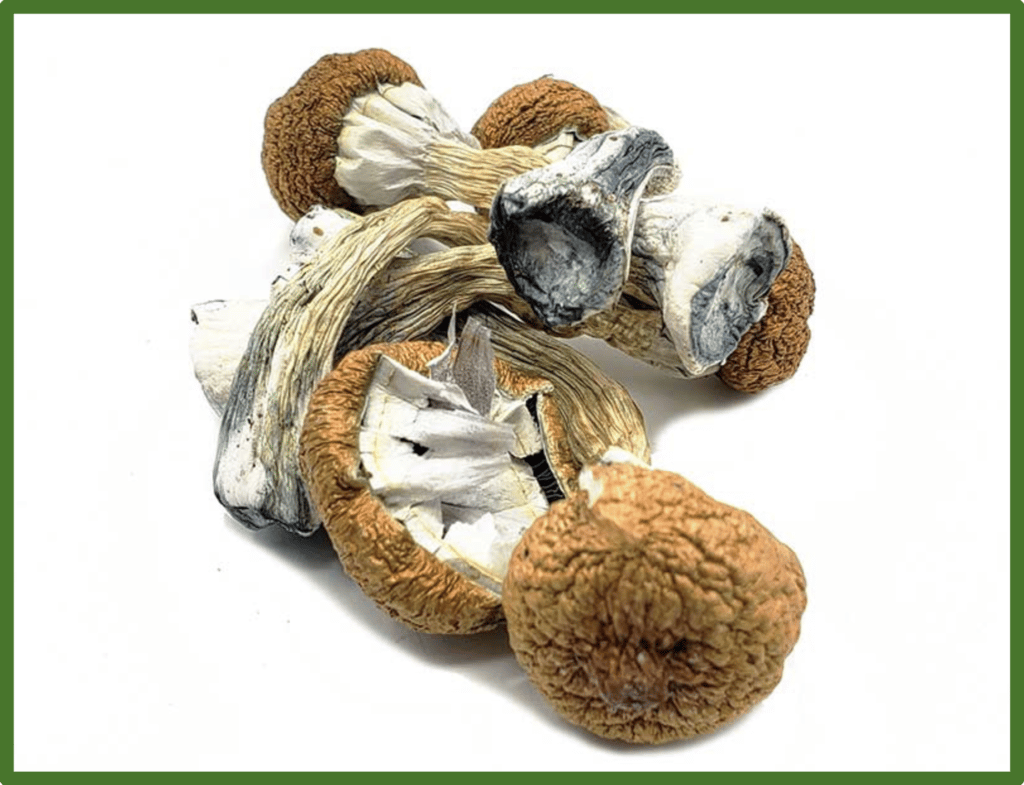
These bare-striped mushrooms nourish their human counterparts with an energetic vigor of wide-reaching awareness and are no stranger to the psychedelic antics of our modern society.
Native to neotropical areas like Africa and the Caribbean, these blue-staining fungi offer an average of 2.5% psilocybin and 1.2% psilocin, making them upwards of 3 times more potent than psilocybe cubensis.
The Best Spore Vendor & At-Home Mushroom Grow Kits
Choosing the right method for cultivating mushrooms at home can be a daunting task, given the plethora of options available. To simplify your decision-making process, we’ve narrowed down our focus to two companies: North Spore and Midwest Grow Kits. In addition, Inoculate The World takes first place as our top recommendation for premium mushroom spores. Best Mushroom Strain For Sale Online Sydney
Our selection is based on their reputation for offering straightforward, cost-effective, and efficient mushroom cultivation solutions. It’s crucial to note that our recommendation is not influenced by affiliate partnerships; rather, these companies have become affiliates due to their commitment to providing valuable and reliable information to our readers.
Explore Harm Reduction Products:
- The Best Mushroom Grow Kits for Psychedelic Therapy
- The Best Spore Vendors for Psychedelic Therapy
- The Best Purity Test Kits for Psychedelic Therapy
- How to Test The Potency of Psychedelics At Home: Mushrooms, LSD, MDMA
